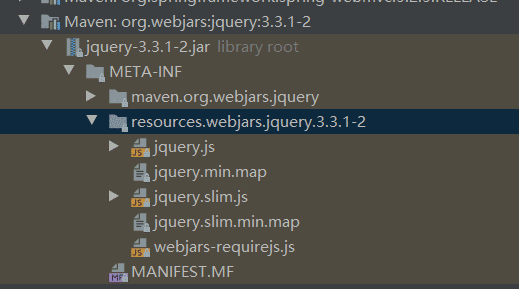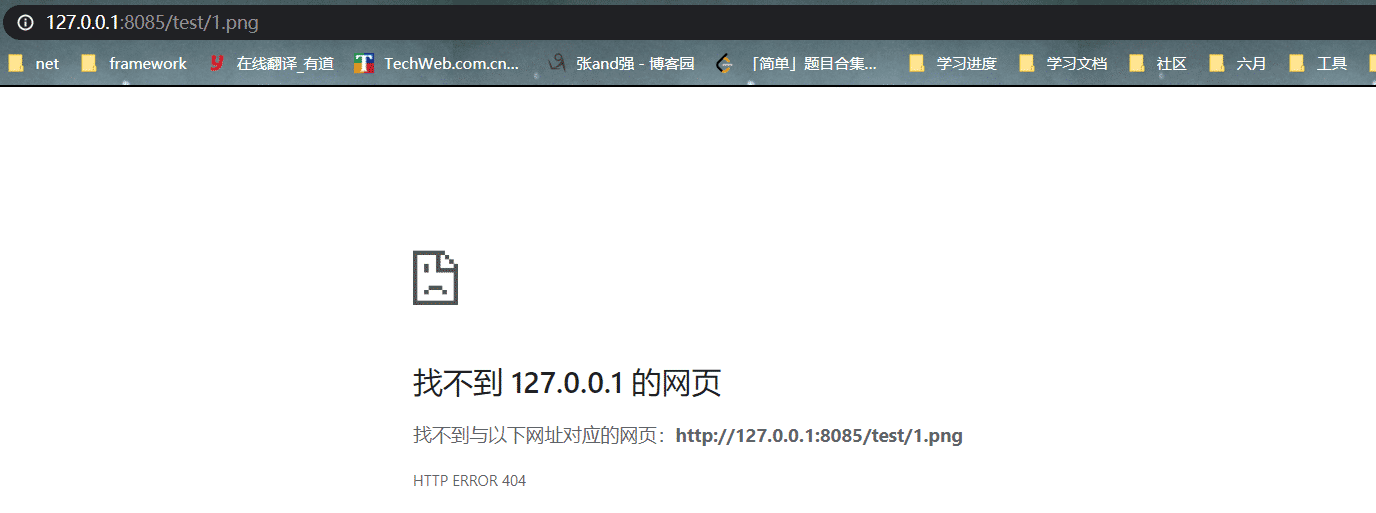Springboot靜態(tài)資源訪問實(shí)現(xiàn)代碼解析
springboot靜態(tài)資源加載默認(rèn)是從/static(或/public或/resources或/META-INF/resources) 目錄下加載靜態(tài)資源。
加載的優(yōu)選級別:/META-INF/resources》/resources》/public》/static
靜態(tài)資源的加載源碼分析(WebMvcAutoConfiguration類)
首先從WebMvcAutoConfiguration.class自動(dòng)配置類部分代碼來看:
//添加靜態(tài)資源規(guī)則public void addResourceHandlers(ResourceHandlerRegistry registry) { if (!this.resourceProperties.isAddMappings()) {logger.debug('Default resource handling disabled'); } else {Duration cachePeriod = this.resourceProperties.getCache().getPeriod();CacheControl cacheControl = this.resourceProperties.getCache().getCachecontrol().toHttpCacheControl();//webjars依賴映射規(guī)則if (!registry.hasMappingForPattern('/webjars/**')) { this.customizeResourceHandlerRegistration(registry.addResourceHandler(new String[]{'/webjars/**'}).addResourceLocations(new String[]{'classpath:/META-INF/resources/webjars/'}).setCachePeriod(this.getSeconds(cachePeriod)).setCacheControl(cacheControl));}//本地配置的映射規(guī)則//this.resourceProperties.getStaticLocations() 從ResourceProperties中加載靜態(tài)路徑String staticPathPattern = this.mvcProperties.getStaticPathPattern();if (!registry.hasMappingForPattern(staticPathPattern)) { this.customizeResourceHandlerRegistration(registry.addResourceHandler(new String[]{staticPathPattern}).addResourceLocations(WebMvcAutoConfiguration.getResourceLocations this.resourceProperties.getStaticLocations())).setCachePeriod(this.getSeconds(cachePeriod)).setCacheControl(cacheControl));} } }
ResourceProperties類部分源碼
@ConfigurationProperties( prefix = 'spring.resources', ignoreUnknownFields = false)public class ResourceProperties { //springboot默認(rèn)的加載路徑 private static final String[] CLASSPATH_RESOURCE_LOCATIONS = new String[]{'classpath:/META-INF/resources/', 'classpath:/resources/', 'classpath:/static/', 'classpath:/public/'}; private String[] staticLocations; private boolean addMappings; private final ResourceProperties.Chain chain; private final ResourceProperties.Cache cache;
映射規(guī)則總結(jié)
在springboot靜態(tài)資源加載規(guī)則中,除了”標(biāo)準(zhǔn)“靜態(tài)資源位置之外,還有一個(gè)較為特殊的WebJars
“標(biāo)準(zhǔn)”靜態(tài)資源映射規(guī)則
所有的“/**”的請求,如果沒有對應(yīng)的處理,那么就去默認(rèn)映射的靜態(tài)資源目錄下去找,如下所示:
'classpath:/META-INF/resources/' 'classpath:/resources/' 'classpath:/static/', 'classpath:/public/' “/**”所有的webjars的請求都會(huì)去 ”classpath:/META-INF/resources/webjars/**“去資源
(如果 以jar包的方式來引入jquery包)
在pom.xml中引入依賴
<dependency> <groupId>org.webjars</groupId> <artifactId>jquery</artifactId> <version>3.3.1-2</version> </dependency>
從引入的包目錄來看

springboot默認(rèn)歡迎頁面
自動(dòng)去加載默認(rèn)目錄下的index.html;如static/index.html
自定義配置靜態(tài)資源目錄
在application.properties文件中去配置
//配置test為靜態(tài)資源目錄spring.resources.static-locations=classpath:/test/
遇到的坑
在配置了靜態(tài)資源目錄的時(shí)候,跳轉(zhuǎn)到的頁面路徑不能寫絕對路徑,
比如:spring.resources.static-locations=classpath:/test/ 我配置test為靜態(tài)資源的加載位置,在訪問的時(shí)候不需要寫test

請求:http://127.0.0.1:8085/test/1.png

請求:http://127.0.0.1:8085/1.png

以上就是本文的全部內(nèi)容,希望對大家的學(xué)習(xí)有所幫助,也希望大家多多支持好吧啦網(wǎng)。
相關(guān)文章:
1. Spring打包jar包時(shí)jsp頁面無法訪問問題解決2. axios和ajax的區(qū)別點(diǎn)總結(jié)3. Jsp+Servlet實(shí)現(xiàn)文件上傳下載 刪除上傳文件(三)4. ASP.NET MVC使用JSAjaxFileUploader插件實(shí)現(xiàn)單文件上傳5. .Net實(shí)現(xiàn)圖片裁剪圖片縮放及圖片加水印詳解6. ASP.NET MVC使用異步Action的方法7. 表單中Readonly和Disabled的區(qū)別詳解8. jsp+servlet實(shí)現(xiàn)猜數(shù)字游戲9. ASP.NET泛型三之使用協(xié)變和逆變實(shí)現(xiàn)類型轉(zhuǎn)換10. 深入理解z-index的工作原理和應(yīng)用技巧

 網(wǎng)公網(wǎng)安備
網(wǎng)公網(wǎng)安備